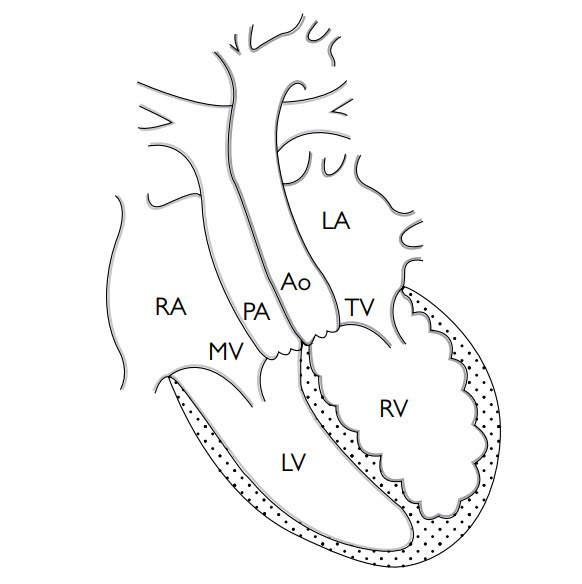Question 2#
You are asked to review and explain the terminology on an echocardiogram report for a patient who has just returned to the ward having been admitted with stable but symptomatic AV block. The report states that there is A–V and V–A discordance.
What is the underlying diagnosis?
A. Congenitally corrected transposition of the great arteries (ccTGA)B. Transposition of the great arteries
C. An atrioventricular defect with lack of AV valve offset
D. Truncus arteriosus
E. None of the above—the term describes a characteristic m-mode pattern of the AV valves in complete heart block
Correct Answer is A
Comment:
The terms are based on the sequential segmental approach of describing anatomy based on the cardiac component and connections from atria to ventricles (A–V) and ventricles to great vessels (V–A). A–V and V–A discordance describes ccTGA where the ventricles are inverted. If the RA connects to the morphological LV (through the ‘mitral’ valve) 
Ao, aorta; LA, left atrium; LV, left ventricle; PA, pulmonary artery; MV, mitral valve; RA, right atrium; RV, right ventricle; TV, tricuspid valve.
and the LA connects to the morphological RV (through the ‘tricuspid’ valve), this is A–V discordance. If the LV then connects to the PA and the RV connects to the aorta, this is V–A discordance. AV block is common in patients with ccTGA and may be the presenting complaint in an undiagnosed adult. The other common presentation is heart failure, as the RV and TV are not designed for systemic work and eventually ‘wear out’. In TGA there is A–V concordance but V–A discordance